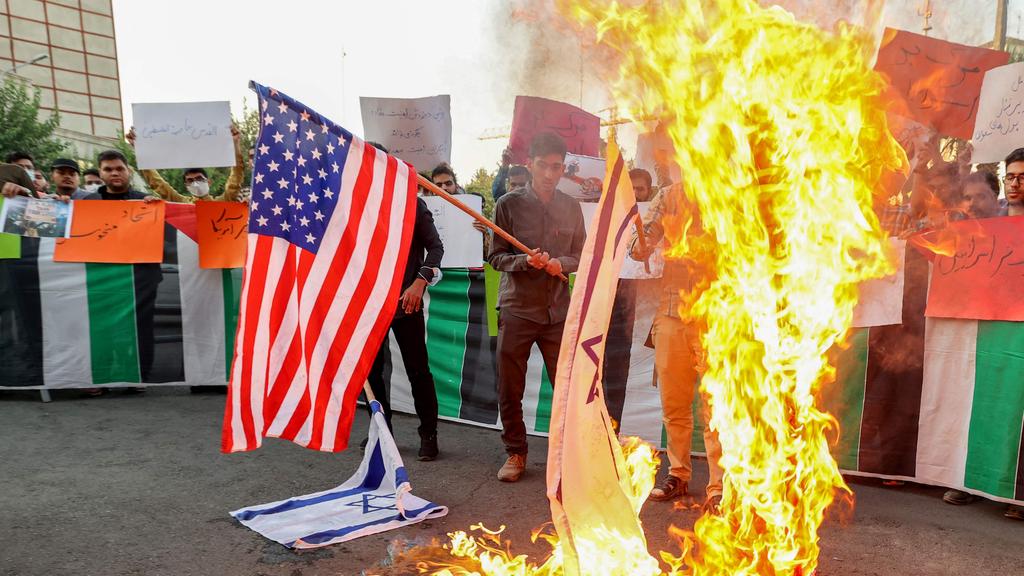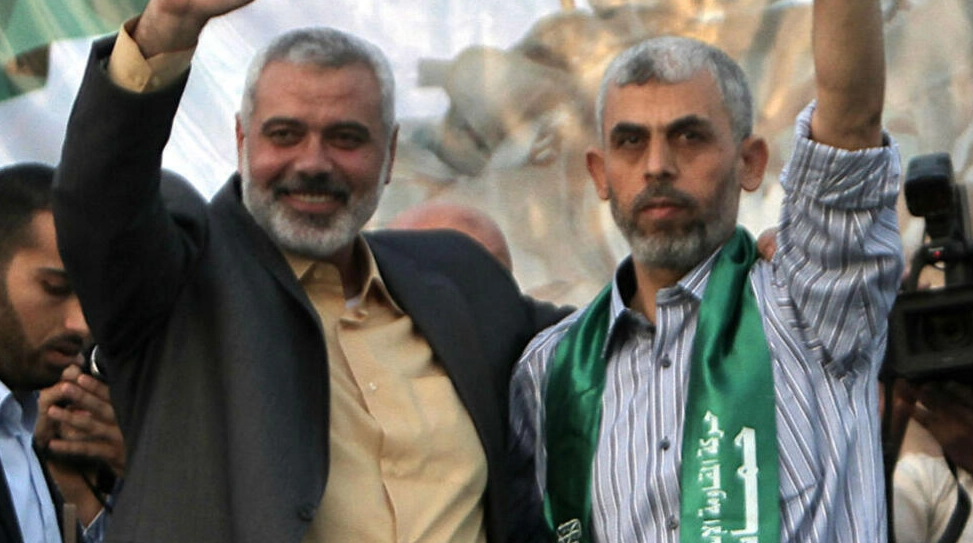
This article is more than
1 year old
Since Hamas's deadly cross-border attack on October 7, 2023, Israeli authorities have been targeting the Palestinian militant group’s top leaders both in Hamas-controlled Gaza and on foreign soil. The group's political chief Ismail Haniyeh, who died in an air strike on his Tehran home on July 31, is the most senior Hamas official to have been killed so far. FRANCE 24 takes a look at some of the key figures on Israel’s hit list.
Mohammed Deif, Israel’s public enemy No. 1
Suspected by Tel Aviv of being the mastermind behind the October 7 attacks, Mohammed Deif is the commanding officer of Hamas’s military wing – the Izz el-Deen al-Qassam Brigades – and has been leading Hamas’s military operations since 2002. He joined the group in the late 1980s after a spell at the head of the Muslim Brotherhood's student union and has been a main target of the Israeli intelligence services for more than 30 years.
Deif was born in the Khan Younis refugee camp in Gaza in 1960 and trained alongside Yahya Ayyash, a Hamas military leader who was assassinated by Israel’s internal security service Shin Bet in 1996.

It was under Deif’s command that the al-Qassam Brigades acquired sophisticated rockets and began launching land incursions from the Gaza Strip through underground tunnels. Israel accused him of being the mastermind behind the suicide bombings that targeted Israeli civilians in the mid-1990s and from 2000 to 2006.
Deif was born under the name Mohammed al-Masri. His alias “el-Deif” means “the Guest” in Arabic and refers to his tendency to change hideouts frequently. He is also known as Mohammed Diab or under his nom de guerre Abu Khaled. The most recent known photo of Deif dates to 1989.
Nicknamed “Ben mavet” (meaning “the son of death” in Hebrew) by Israelis, Deif has dodged several assassination attempts over the years, including in 2002, 2003 and 2006. The last attempt on his life left him a paraplegic, Israeli officials say. But Hamas has never confirmed this information.
In 2014, his wife and two children were killed when their house northwest of Gaza City was bombed.
Since October 7, the Hamas military commander has been the target of multiple Israeli strikes in Gaza. On July 14, a senior Hamas official said Deif had escaped another Israeli attempt to kill him and was doing “fine”.
Ismail Haniyeh, the political leader
Born in one of Gaza’s most crowded refugee camps in 1963, Ismail Haniyeh had topped Israel’s most wanted list for years, until his death in an air strike on his Tehran home on July 31.
Hamas and Iranian officials both accused Israel of carrying out the strike and vowed to retaliate. There was no immediate comment from Israeli officials.
Haniyeh had been at the head of Hamas’s political branch since May 2017, living between Turkey and Qatar after he voluntarily went into exile in December 2019.

Haniyeh earned a degree in Arabic literature before joining Hamas in 1988. He spent several years in Israeli prisons in the late 1980s and early 1990s, when Israeli authorities accused him of running the group’s security wing. He returned to Gaza in 1993 and was appointed dean of the Islamic University of Gaza.
After Israel released one of Hamas’s founders, Sheikh Ahmed Yassin, from prison in 1997, Haniyeh was chosen to head his office. He rose through the ranks until he eventually became prime minister of a Palestinian unity government in 2006.
In 2007, Haniyeh was deposed by Palestinian Authority president Mahmoud Abbas after Hamas took control of the Gaza Strip by force. Considered a pragmatist, he had repeatedly called for reconciliation with Fatah, a rival Palestinian nationalist party that backs Abbas, to no avail.

Israel’s then defence minister, Shaul Mofaz, had threatened to kill Haniyeh. Mofaz stated on live radio that Haniyeh, who had escaped an attempt on his life in 2003, was not safe from assassination if his group “continued its terrorist activities”.
Re-elected leader of Hamas in 2021, Haniyeh had been on the US list of Specially Designated Global Terrorists (SDGTs) since 2018. The State Department listed him for having “close links with Hamas’s military wing” and for being “a proponent of armed struggle, including against civilians”.
After the group attacked Israel on October 7, Haniyeh said they were “on the verge of a great victory” in a speech broadcast on the Hamas-run Al-Aqsa television channel.
That same day, Al-Aqsa TV showed Haniyeh appearing alongside other Hamas leaders in his office in Doha, jubilantly watching images of the deadly attack. He then proceeded to lead his acolytes in a prayer to “thank God for this victory”.
Saleh al-Arouri, Hamas’s former No. 2
Saleh al-Arouri was appointed deputy chairman of the Hamas political bureau in 2017 and was considered one of the group’s key political leaders until his death on January 2, 2024 by an Israeli strike in Beirut, Lebanon.
Arouri was among the victims of an Israeli strike on Hamas’s office in Dahiyeh, a Hezbollah stronghold in southern Beirut.
Accused by Israel and the US of financing and overseeing Hamas’s military operations in the occupied West Bank, from where he hailed, Arouri had been on the US list of terrorists since 2015.
Through its Rewards for Justice Program, the US State Department offered up to $5 million for “information leading to the identification or location” of Hamas’s No. 2.

Arouri was imprisoned in Israel between 1995 and 2010, then deported to Syria before he moved to Turkey and then Lebanon.
Arouri was believed to have been involved in planning the kidnapping and murder of three Israeli teenagers in the occupied West Bank in the summer of 2014. He publicly celebrated the murders as a “heroic operation”, according to the US State Department.
On October 25, the Hezbollah-owned Al-Manar TV channel reported that Arouri held a meeting with Hezbollah leader Hassan Nasrallah and the head of the Palestinian Islamic Jihad, Ziyad al-Nakhalah.
Israeli troops blew up his family home in the occupied West Bank on October 31, but local residents said it was unoccupied at the time.
The Israeli military arrested around 20 people on October 21, including Arouri’s brother and nine of his nephews, in the village of Arura near Ramallah.
Marwan Issa, the 'shadow man'
Marwan Issa, 58, was Mohammed Deif’s right-hand man until his death on March 11, 2024 in an Israeli air strike. Issa was a key target for Nili, a special unit set up by Shin Bet, Israel’s internal security service, and the Mossad intelligence service to track down the Hamas members responsible for the October 7 attacks.
Issa was the deputy commander-in-chief of Hamas’s military branch. Like Deif, Issa escaped several assassination attempts, including one in 2006, according to Israeli daily newspaper Yedioth Ahronoth. At the time, he was taking part in a meeting also attended by Deif. The newspaper also revealed that his house was bombed twice, in 2014 and 2021.